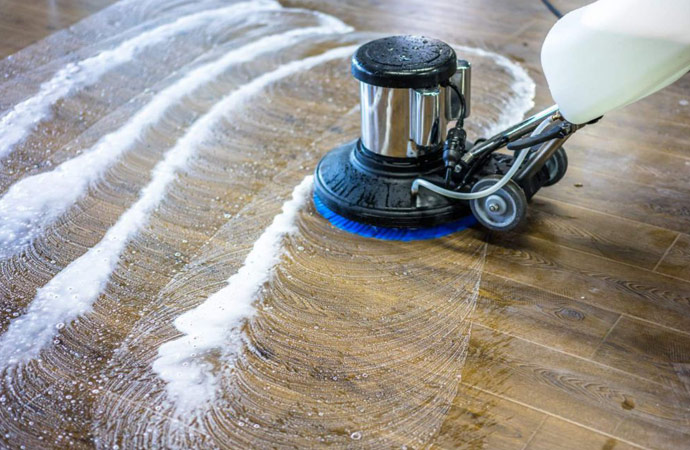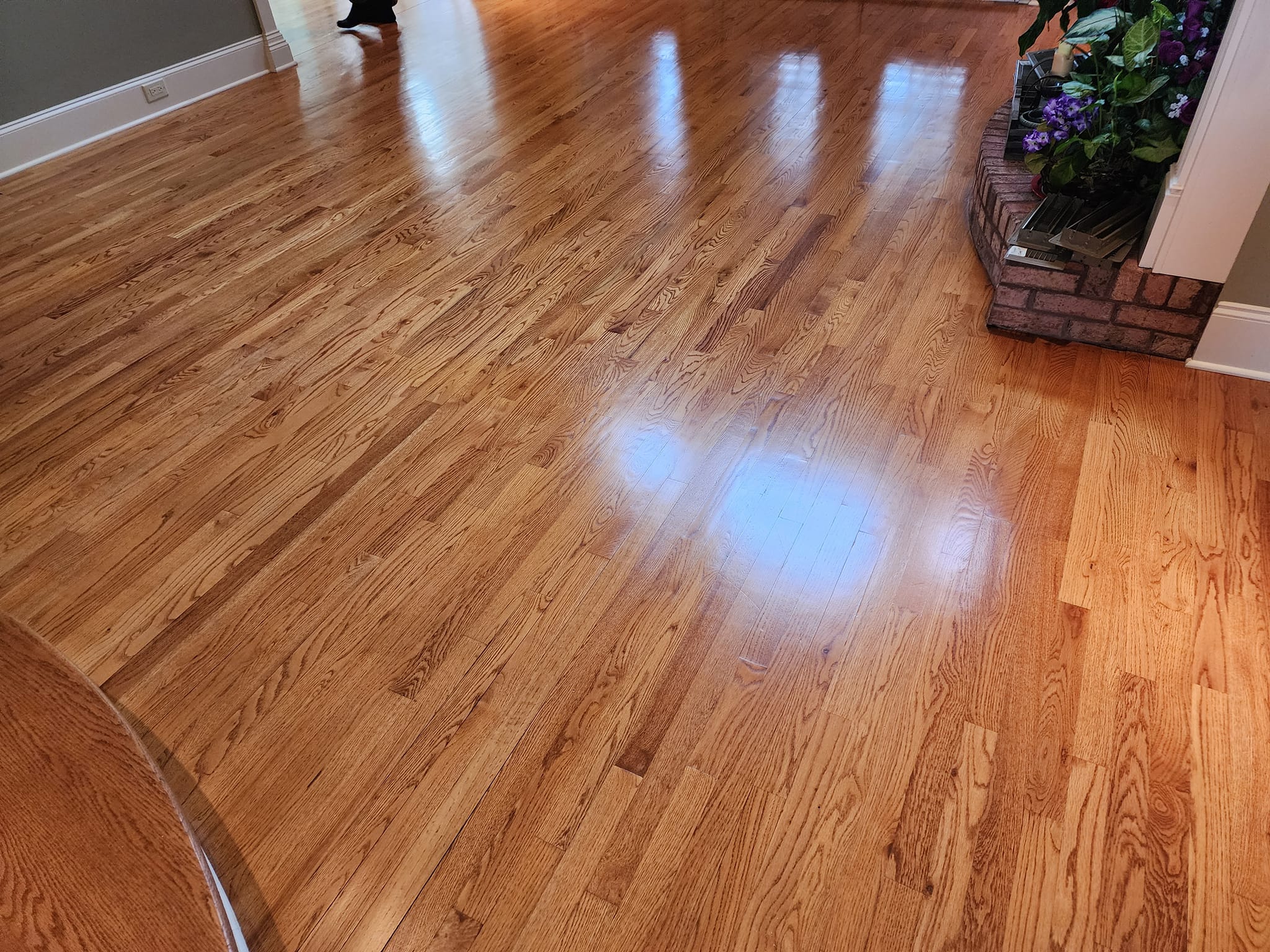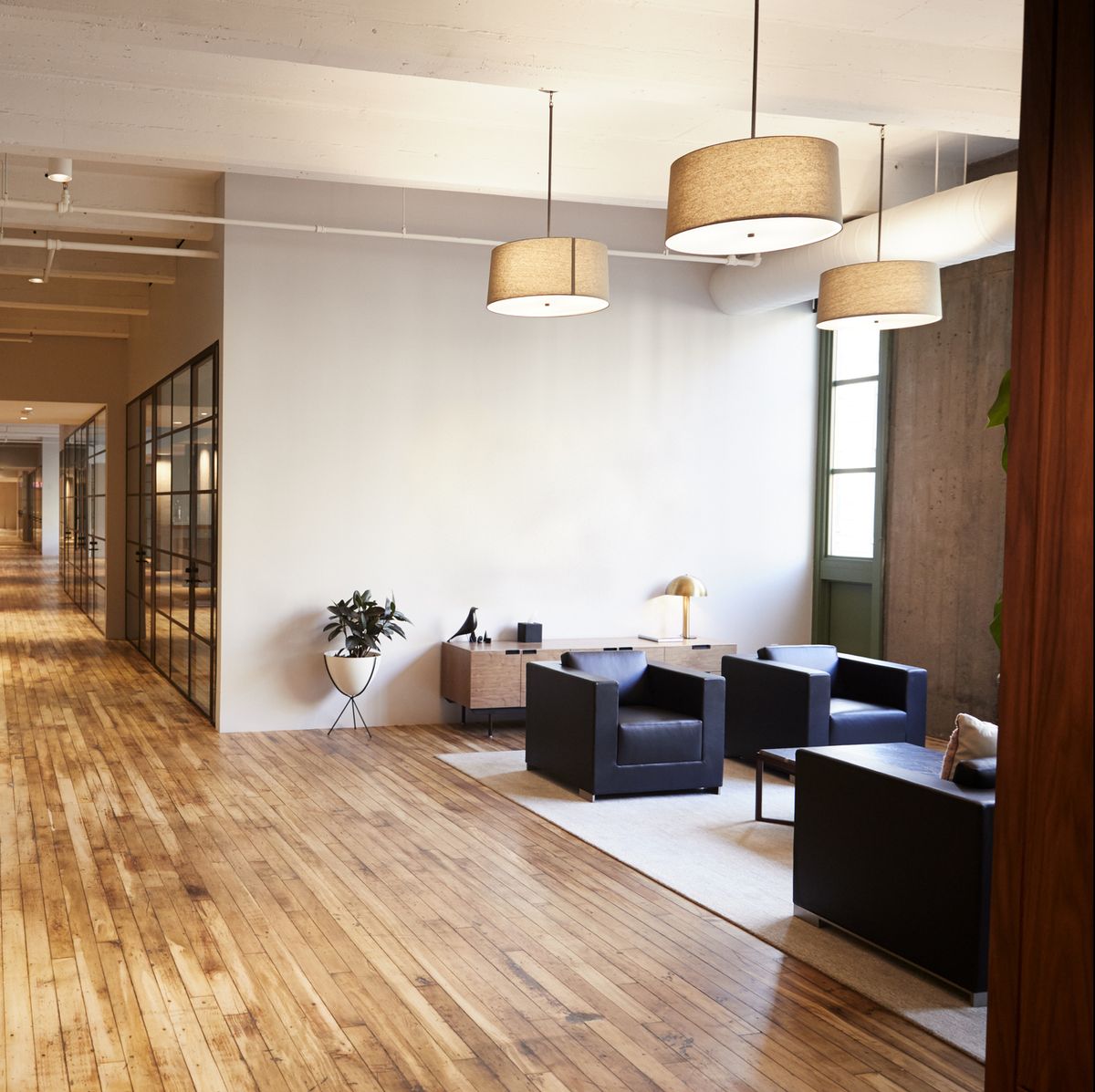Hardwood Cleaning and Buffing
Hardwood Floor Cleaning
Overtime hardwood floors will accumulate everyday residues such as oils, grease, and dirt. These residues will act as an abrasive which may cause premature finish wear. To remove these residues, we recommend to Deep Clean your hardwood floor once a year, Call us to discuss your floor today! (714) 553-3736
How often should you clean hardwood floors?
Nothing enhances the beauty and warmth of traditional and modern homes like hardwood floors. The greatest advantages of hardwood flooring are its lifespan and durability, but even the best hardwood floors need to be regularly cleaned and maintained. If you use the correct wood floor cleaner and adhere to these guidelines, learning how to clean hardwood floors isn’t difficult and you’ll be a pro in no time. Even exotic hardwood floors can be kept clean and maintained without the need of specific cleaners or maintenance techniques. Understanding what not to use on wood floors is just as important as knowing what to use to clean them because hardwood floors are constructed of natural materials. Although the components in commercial wood floor cleaners can vary, it’s crucial to stay away from products that aren’t pH-neutral or aren’t tailored for your flooring. To select the proper industrial cleaner, it is essential to understand the type of hardwood and how it has been treated. Always, always, always read the cleaner’s label to make sure.
What is the best way to clean and shine a hardwood floor?
Many artificial hardwood floors are not what they first appear to be. Therefore, be sure to investigate before cleaning.Despite being safe and efficient elsewhere around the house, natural cleaners like distilled white vinegar, lemon juice, and baking soda aren’t suitable for hardwood floors. The same is true of excessive dampness. Your hardwood floors should never be steam cleaned, and you should never use too much water when using a wood floor cleaner. The finest wood floor cleaning in most houses is just plain old soap and water, and the only tools you need are a broom, vacuum, and mop. Avoid oils, waxes, furniture sprays, and anything with ammonia. The ideal mop for wood floors is a flat-head or string mop made of microfiber that is simple to wring out. The mop’s moisture level may be adjusted, and the microfibers are more effective than certain conventional materials at picking up dirt and grime. In a spray bottle, combine one quart of water and one tablespoon of dish soap. Spray about a 33 area with a fine mist of your cleaning solution, then begin mopping while following the grain of the wood. Just enough cleanser should do the trick because hardwood floors can be damaged by moisture and water. To avoid treading on the wet floor as you mop, move across the room backward. No need to rinse; simply let your hardwood floors air dry. You may restore the sheen if they appear a little dull by buffing them with a clean, dry microfiber mop. Daily sweeping is an essential part of maintaining your hardwood floors on a regular basis. Your home will be filled with tiny dust and debris that can easily harm the surface of the wood. Contrary to what most people believe, a vacuum is not just for carpet. A nice broom with soft, long-lasting bristles is a sensible investment to get the job done. Dust bunnies behind baseboards and debris between floors that could have been missed while sweeping can be picked up with your vacuum’s extender attachments and round brush accessory. Remember that while small objects might not appear important, they could end up damaging the wood.To protect surface-sealed floors from water and stains, urethane, polyurethane, or polyacrylic are used as sealants. Most likely, the floor installer who installed your floor gave you a cleaning product recommendation, but occasionally it’s not possible to use that product because of the price or lack of availability. If this applies to your own floors, soap and water are your best bet. The mildness of plain soap prevents it from dulling or scratching your finish like other abrasive cleansers do. Simply mix a bucket of water with 1/4 cup of dishwashing soap to begin mopping. Before using the mop on your floors, be careful to properly dry it out because too much water can still damage wood, even if your floor has been sealed. If you look online how to clean hardwood floors, you could find suggestions to dilute the water with vinegar.
How to maintain a hardwood floor?
Although some people firmly believe this, we wouldn’t advise it. Over time, the wood may become dull due to the vinegar’s acidity. Keep it simple with some soap and water. And here’s an expert tip for you: If you want to avoid leaving stains on the floors, use distilled water rather than tap water. Since these surfaces are less resistant to moisture and regular wear and tear and are typically sealed with wax, penetrating-seal, oil-treated, lacquered, shellacked, varnished, and untreated floors require a little more labor-intensive maintenance. Use a floor stripper to securely remove the old wax from the panels once a year. Apply a light layer of fresh wax on the floor when it has dried, and allow it to cure. Use a liquid wax or paste wax made especially for wood floors for the greatest results.
How Do You Clean an Oiled Hardwood Floor?
Cleaning oiled hardwood floors requires some specific care to protect the finish and maintain the natural beauty of the wood. Here’s a step-by-step guide to clean oiled hardwood floors effectively:
- Gather the necessary supplies: You’ll need a broom or vacuum cleaner, a mop, a bucket, warm water, a pH-neutral hardwood floor cleaner specifically formulated for oiled floors, and soft microfiber cloths.
- Begin by removing loose dirt and debris: Use a broom or vacuum cleaner with a soft brush attachment to sweep or vacuum the floor. Pay attention to corners and hard-to-reach areas.
- Prepare the cleaning solution: Fill a bucket with warm water and add the recommended amount of pH-neutral hardwood floor cleaner. Read the instructions on the cleaner’s label for precise measurements.
- Dampen the mop: Dip a mop into the cleaning solution, ensuring it’s only slightly damp, not soaking wet. Excess water can damage the oiled finish.
- Clean the floor: Working in small sections, gently mop the floor, moving in the direction of the wood grain. Avoid excessive scrubbing or applying too much pressure, as this can remove the oil finish.
- Spot clean as needed: For stubborn stains or spills, you may need to use a slightly more concentrated solution of the hardwood floor cleaner. Apply it directly to the affected area and gently scrub with a soft cloth or non-abrasive sponge. Rinse the area thoroughly afterward.
- Dry the floor: After cleaning each section, use a soft, dry microfiber cloth to remove any excess moisture. Ensure the floor is completely dry before walking on it again.
- Apply maintenance oil (optional): Depending on the manufacturer’s recommendations and the condition of your floor, you may need to periodically apply a maintenance oil to replenish the protective finish. Refer to the instructions provided by the oil manufacturer for specific guidance on application and frequency.
- Regular maintenance: To keep your oiled hardwood floors in good condition, perform regular maintenance tasks such as sweeping or vacuuming to remove dust and dirt. Avoid using harsh cleaners, abrasive tools, or excessive water.
Remember to consult the manufacturer’s guidelines for specific cleaning recommendations, as different oils and finishes may have unique requirements.
What is hardwood buffing?
Wood flooring can be damaged by muck, filth, and normal wear and tear. You can clean and brighten your floors without using expensive professional equipment if your real estate investment needs new flooring but you don’t want to rent or buy a buffing machine. Use products made especially for your floors whenever possible. Certain forms of flooring, such as linoleum, unfinished cork floors, and timber, benefit greatly from buffing and waxing. After waxing, hardwood floors may lend timeless beauty to your house while also extending its lifespan and bringing back their luster. This method of floor finishing coats a hardwood floor with a thin layer of clear or colored wax and buffs it to a shine. As the wax’s solvents evaporate, the wax thickens into a protective seal that reduces small flaws and boosts stain resistance. There are a few reasons why you should hire pros to complete your project even though you might be thinking about doing it yourself.
Can you buff out hardwood scratches?
Working with a qualified expert ensures high-quality flooring services. They are uniquely qualified and experienced to finish the project on schedule. Additionally, they employ top-notch machinery that facilitates the work and offers flawless quality. It’s possible that you lack the necessary expertise to handle the flooring project on your own. How to use the equipment for construction, how to prepare the surface, and how to correct probable faults are a few of the considerations you need to make. By buffing and waxing your hardwood floor professionally, you can be confident that the job will be done well and to your satisfaction. There is little doubt that with time, especially in areas with high usage, your hardwood floor may develop scratches. If these flaws are not fixed right away, your floor will get dull and need to be replaced. A hardwood floor is protected from stains and other types of flaws by properly buffing and waxing it, which also gives the floor a brand-new shine. To preserve your floor and guard it from wear, many layers of wax are put over the sealer coat.
Advantages of buffing hardwood floors:
Your hardwood floors will seem more beautiful and will feel comfortable to the touch thanks to the sacrificial wax layer, which also shields the surface against scuffs, scratches, and grit. It helps preserve cleanliness, which is one of the main reasons why most homeowners decide to have their hardwood floors professionally buffed and waxed. Cleaning the floor in your kitchen or living room can be challenging, especially if there is a lot of traffic. We can’t always demand that everyone remove their shoes before stepping onto the floor. Your hardwood floors will become easier to clean and maintain after being waxed since it adds a protective layer. This means that in the event of accidental spills, you won’t have to spend a lot of time washing stubborn stains from your floor. Another advantage of buffing and waxing your floor is that it gets rid of any moisture that may have gotten stuck between the boards. Your floor may become damaged by moisture, making future repairs more expensive. Water leaks or spills leave water paddles on floors, which can cause wood to decay or encourage the spread of mold. This implies that if nothing is done to fix the issue, your hardwood floor will age more quickly and cost more money to repair or replace. Our hardwood floor is strengthened and shielded from elements like moisture by a professional waxing. Clear wax imparts a glossier sensation and a dazzling appearance that mopping or vacuuming cannot. The same advantages are also provided by colored waxes, which also provide a lovely color to make your hardwood floors look even more luxurious. It brings out the wood’s inherent color and provides your surface a lovely soft gloss. Your home’s appearance can be significantly changed by having a properly waxed floor because it makes the entire space brighter.
What does buffing a hardwood floor do?
Using superior waxing supplies and cutting-edge technology that keeps your floors looking shining all year round, you can extend the life of your flooring. Professional wax finishes typically soak in and harden, leaving the floor with a permeable seal that is protective. Because they maintain the quality of the coating, only cleaning solutions, buffing pastes, and solvent-based waxes made exclusively for hardwood floors should be used. To protect the underlying coatings, it’s critical to utilize cleaning supplies designed especially for wax finishes. To establish how long the item should be left on the floor, carefully follow the directions. When necessary, a fresh coat of wax can be used to restore luster. Professional hardwood floor buffing and waxing has a number of advantages that make it popular among contemporary homes. In addition to enhancing durability, it removes all types of flaws by making your floors look brand-new and shining.
Why polish your hardwood floor?
Floors experience heavy traffic on a daily basis as well as inevitable spills, scuffs, or accidents. Smart preventive methods, which not only assist to protect flooring but also save the time you spend cleaning, are the ideal approach to clean hardwood floors. Place floor mats outside and inside outside doors to reduce tracked-in dirt. Create a boot removal space during inclement weather to prevent water and de-icing products from damaging floors. Keep a cleaning cloth or tiny towel hidden away near to the door in addition to a place to sit and a place to store shoes so that you can easily clear up accidental puddles on wood floors. Many people really like wood flooring for their homes and workplaces. Even if there is no rain in the forecast, it is a good idea to take your shoes off before entering the house to prevent spreading germs and filth. Heels and cleats that could cause scratches should be left outside the door, especially if the floors are hardwood. Use floor protectors under furniture to prevent scratches on hardwood floors, and use area rugs in play areas to protect the floor from kids’ toys. Since these floors have so many advantages, it makes sense.
What happens when you don’t polish your hardwood floor?
Wooden floors are a terrific investment since they are long-lasting, simple to maintain, and fashionable, much like marble floors. However, over time, the strength and appearance of wooden flooring may start to deteriorate. They eventually lose their attractiveness relative to when they were first installed. Fortunately, you don’t need to be concerned because wood polishing can restore the luster to your wood floors. It would be preferable if you frequently polished your wooden flooring as soon as you had them placed. Regular wood polishing is necessary for a variety of reasons, including the fact that with time, your wood floors won’t look as shiny as they once did. They will eventually lose their shine and give your room a rather drab appearance. However, your floors and space will look even more brilliant and appealing than before with routine DIY floor polishing. In fact, your floors’ brilliance will last longer the more polishing you do. Your wooden floors will become much more durable if you employ a professional to polish them. If you don’t polish your wooden floors yourself or hire professional floor polishing services to do it for you, your wooden floorboards can get stained quite easily. In fact, the polish that professionals frequently use creates a protective layer of wax to minimize the damage caused by spills and scratches. Such stains are frequently quite difficult to remove. But when polish is applied to them frequently, a protective barrier is formed, making them more stain-resistant. Many people opt to have their wood floors sanded instead of having their wood varnished so that their floors can seem fresh and lovely once more. For hardwood floors, a routine sweep with a broom or dust mop works wonders. The amount of traffic your hardwood floors see will determine how frequently you need to perform this task.
How to clean and polish a hardwood floor?
To quickly clean wood floors, use a mop that has been dusted with a cleaning solution to remove debris like dust, filth, and pet hair that could harm the surface. The finest mop for hardwood floors is one that has a microfiber head as an option. Dust and filth are captured by this substance. Follow the instructions provided by the manufacturer of the mop when using dusting sprays or wood floor polish; some mop models won’t need additional cleaning solutions. Don’t forget to vacuum your hardwood floors when thinking about how to clean them. Utilize a vacuum with a floor-brush attachment for weekly or biweekly cleaning. Use caution while using a vacuum since the beater bar attachment can damage a wood floor’s finish. Preventive measures and regular cleaning are the best ways to keep hardwood floors clean, but occasionally a thorough clean is required. A weekly dusting won’t get rid of all the dirt, oil, and grime that has accumulated over time. Sanding, however, can take a lot of time and be rather expensive. Additionally, because it effectively scrapes off their top layer, it can harm your floors. Fortunately, if you choose wood polishing, you won’t need to sand your hardwood floors before hiring floor polishing services. This is because they will already have a wax or polish-based protective covering on them. Additionally, they receive improved defense against spills, traffic, scratches, and chips. Wooden floors are undoubtedly a better option than carpets if you have allergies, provided that they receive regular polishing from a floor polishing service provider. Although carpets might be an attractive way to cover your floors, they are also ideal places for dust and dust mites to thrive, which is highly dangerous for people who are prone to dust allergies and asthma. On the other hand, polished wood floors are less prone to turn into a breeding ground for dust and dust mites. Speak with your flooring producer if you’re unclear of the ideal hardwood floor cleaning supplies for your residence. They might frequently suggest a certain cleanser to use with their product. But if your flooring isn’t brand-new or you can’t contact the manufacturer, choose a cleaning solution designed especially for wood floors. Avoid using vinyl or tile floor cleaners since they could harm wood floors instead of cleaning them.



